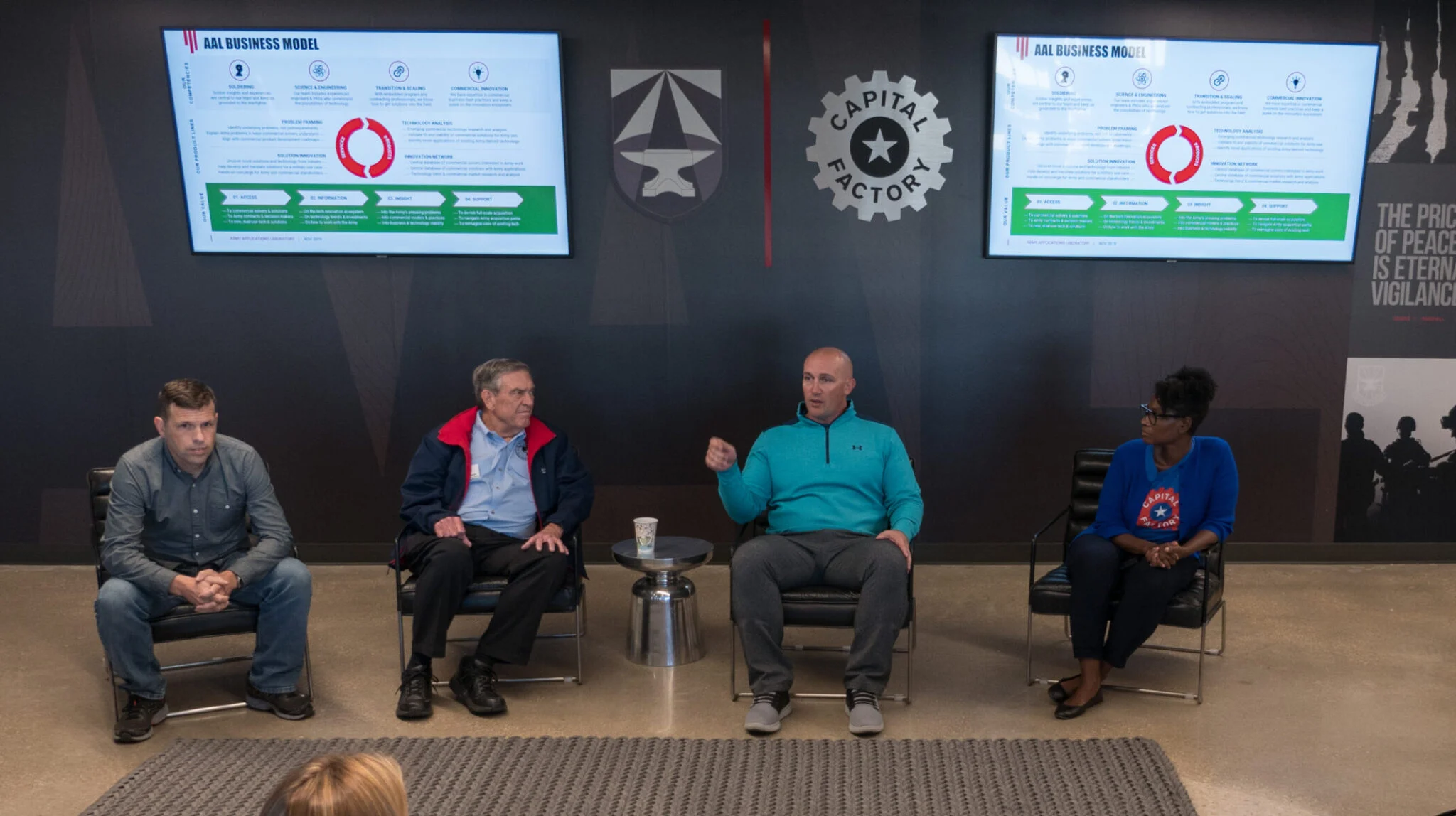A cinco años de su fundación como parte del entonces naciente Comando de Futuros del Ejército, y tres años desde que obtuvo su propio presupuesto, el Laboratorio de Aplicaciones del Ejército emitió el lunes su primer informe de progreso formal. Se puede ver que ha trabajado con éxito con pequeñas empresas, muchas de ellas fuera de la base industrial y de defensa tradicional, para hacer llegar a los soldados tecnologías innovadoras para que puedan realizar pruebas prácticas, desde una nueva aplicación de seguimiento de la salud de los soldados, realidad aumentada, tutoriales de mantenimiento, y hasta un brazo robótico para ayudar a manejar proyectiles de artillería de 100 libras .
WASHINGTON — Five years since its founding as part of then-nascent Army Futures Command, and three years since it got its own budget, the Army Applications Laboratory on Monday issued its first formal progress report [PDF].
The good news: AAL has successfully worked with small companies, many outside the traditional defense-industrial base, to get innovative technologies to soldiers for hands-on testing, from a new health-tracking app for soldiers [PDF], to augmented-reality maintenance tutorials, to a robotic arm to help handle 100-lb artillery shells.
The bad news: More than half of finished projects fizzled in the prototype phase for lack of long-term funding. That includes the robot arm — which worked great, cutting loading time by more than half and reducing the risk of injuries to human loaders — “due to a funding tradeoff caused by changing priorities.”
“Program Objective Memorandum (POM) funds may not be available when the technology is ready to transition,” the report acknowledged. “Technologies can end up in the valley of death due to factors external to the project, even if the project meets all milestones and the technology solves the military problem.”
AAL was never intended to reequip the entire Army, just to bring together serving soldiers and innovative civilians — outside the sclerotic federal procurement process — to jumpstart progress on new tech. All told, it’s build a network of over 5,000 companies and awarded contracts to 158 (across 31 states), of which 83 percent are small firms with under 100 employees. Many had only a handful of prior Pentagon contracts, and 16 percent had never even done business with DoD before.
Besides getting private industry engaged, AAL also got support from established Army institutions and even other DoD organizations like the Naval Health Research Center. In fact, of the $183 million awarded on AAL contracts, only $105 million (57 percent) came from AAL’s own budget. The other $78 million (43 percent) came from interested partners across the Defense Department and even in the private sector.
But the big test is getting across that “valley of death,” from prototypes and demonstrations to mass production and operational deployment. Of the AAL’s 48 projects to date, almost two-thirds (28) are still in “active” and in progress, so it’s too early to pass judgment. But of the 20 deemed “complete,” with $60 million in funding, nine have “transitioned” to sustained programs, with $44 million in follow-on contracts to date.
Is that 45 percent transition rate a passing grade? Arguably, yes. For Silicon Valley venture capital, if nearly half the companies you invest in survive, that’s actually pretty good — although of course the ROI of a few “unicorns” more than makes up for losses elsewhere. For Pentagon weapons programs, that’s not bad either, especially considering the US Army’s long-running track record of cancelled programs, from FCS in 2009 to FARA just this February.
AAL has some interesting ideas on how to do better, particularly by seeking multiple funding sources, governed by different legal strictures, so some money is always available even if other cash flows dry up. “By combining SBIR [Small Business Innovation Research grants], flexible RDT&E [Research Development Test and Experiment] (for which the precise project doesn’t need to be defined until the year of execution), and private investment, AAL can mitigate or respond to this uncertainty, helping to bridge the valley of death,” the report argued. “For example, flexible RDT&E can be deployed to transition a SBIR project for which POM funding was delayed a year due to challenges elsewhere.”
“I was admittedly apprehensive about what our metrics would reveal,” AAL director Casey Perley wrote in her foreword to the report. “Nevertheless, as a scientist I was fully prepared to disclose the numbers regardless of what they reveal under the belief that the utility of experiments also comes from the discovery of what doesn’t work. And AAL certainly has done that.”
Fuente: https://breakingdefense.com


